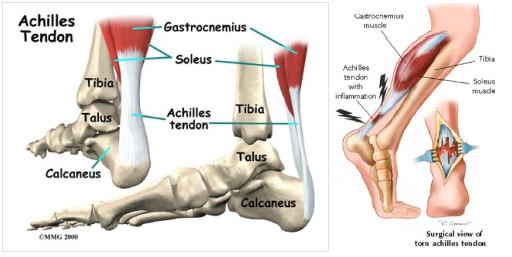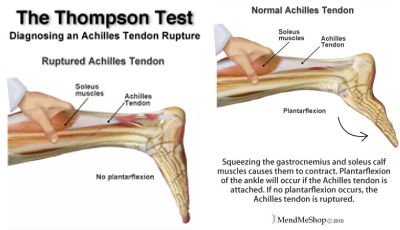Conservative treatment
Typically, achilles tendonitis is curable with mostly non-surgical treatments. First, patients must stop exercising, then massage their heel and ankle area with ice. They can also use nonsteroidal analgesic drugs (NSAIDs), physical therapy, injection therapy (PDRN, prolotherapy), and rehabilitation exercises (massage, stretching, strength exercises) to treat their achilles tendonitis.
If a patient suffers from a complete rupture of the achilles tendon, the best option is to either immobilize the ankle with a cast or surgically reconstruct the tendon.
Surgical treatment
An achilles tendon typically ruptures when a sudden dorsiflexion force is applied to a strained dorsoventral muscle. Fortunately, most ruptures remain subcutaneous.
If the patient does not have any metabolic disorders, such as lower extremity edema, skin necrosis and diabetes, surgical repair is recommended to reconstruct a ruptured achilles tendon.
 Foot/Ankle Achilles Tendon Rupture
Foot/Ankle Achilles Tendon Rupture

